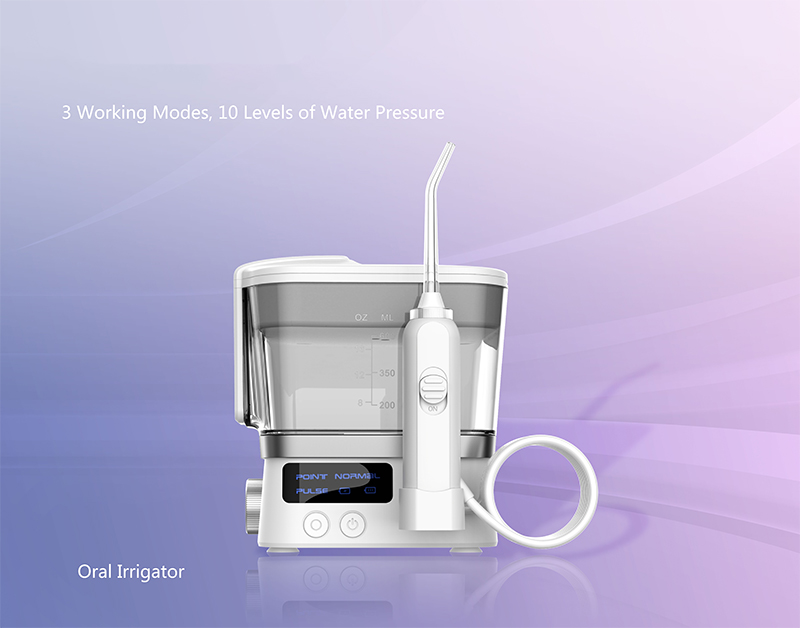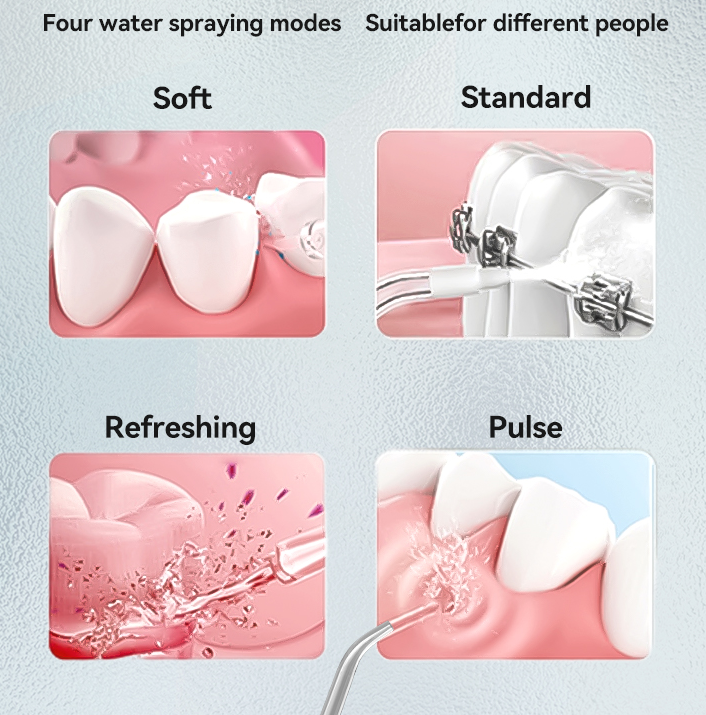Maintaining good oral hygiene is essential for overall health, and flossing plays a crucial role in this. Traditional flossing methods have been widely practiced, but there is an alternative that offers several benefits: water flossers. In this article, we will explore the advantages of using a water flosser for improved oral health.
1. Introduction to water flossers and their purpose
A. Definition and explanation of water flossers
Water flossers, also known as oral irrigators, are devices that use a steady stream of water to remove plaque and debris from between the teeth and along the gumline. They provide an effective and convenient alternative to traditional flossing methods.
B. Importance of oral hygiene and the role of flossing
Maintaining good oral hygiene is vital for preventing gum diseases, cavities, and bad breath. Flossing helps remove food particles and plaque that brushing alone cannot reach, ensuring a thorough cleaning of the mouth.
C. Transition to discussing the benefits of water flossers
While traditional flossing methods are effective, water flossers offer unique advantages that can enhance oral health. Let's explore these benefits in detail.
2. Comparison between water flossers and traditional flossing methods
A. Explanation of traditional flossing methods
Traditional flossing involves using a thin string or floss to clean between the teeth and along the gumline. It requires manual dexterity and may be challenging for some individuals to perform correctly.
B. Highlighting the limitations and challenges of traditional flossing
Traditional flossing can be time-consuming and may cause discomfort or bleeding gums, especially for those with sensitive teeth or braces. Additionally, reaching certain areas of the mouth, such as the back teeth, can be difficult with traditional floss.
C. Introducing water flossers as an alternative solution
Water flossers provide a gentle and effective way to clean the entire mouth. They utilize a pulsating stream of water that can easily reach all areas, including the back teeth. This makes them an ideal alternative for individuals with limited dexterity or specific dental conditions.
3. Benefits of using a water flosser for oral health
A. Improved plaque removal and gum health
Water flossers have been proven to remove more plaque compared to traditional flossing methods. The pulsating water stream effectively dislodges plaque, reducing the risk of gum disease and promoting healthier gums.
B. Reduction in gingivitis and gum disease
Regular use of water flossers has shown to significantly reduce gingivitis, a common gum disease characterized by inflammation and bleeding gums. The pulsating water helps clean deep between the teeth and along the gumline, reducing the risk of gum infections.
C. Enhanced accessibility and ease of use compared to traditional flossing
Water flossers are user-friendly and can be easily maneuvered around the mouth, making them accessible to a wide range of individuals. The convenience they offer encourages consistent flossing habits, leading to better oral health outcomes.
D. Prevention of tooth decay and cavities
By effectively removing plaque and food particles, water flossers help prevent the formation of cavities and tooth decay. The thorough cleaning they provide ensures that no debris is left behind, maintaining optimal oral health.
E. Effectiveness in cleaning hard-to-reach areas
Water flossers excel in reaching areas that are difficult to clean with traditional flossing. They can remove debris from deep gum pockets, orthodontic appliances, and dental implants, ensuring a comprehensive cleaning of the entire mouth.
4. Tips on how to use a water flosser effectively
A. Step-by-step guide on using a water flosser
To use a water flosser effectively, follow these steps:
1. Fill the reservoir with lukewarm water or a dentist-recommended mouthwash.
2. Select an appropriate pressure setting on the device.
3. Lean over the sink and place the flosser tip in your mouth.
4. Starting with the back teeth, aim the tip along the gumline and between the teeth.
5. Move systematically throughout the mouth, focusing on each tooth and gum area.
6. Continue until all areas have been thoroughly cleaned.
B. Demonstrating proper technique and positioning
Hold the water flosser at a 90-degree angle to the gumline for optimal cleaning. Gently guide the tip along the gumline, pausing briefly between teeth to allow the water to remove debris effectively.
C. Highlighting the importance of regular usage and consistency
Consistency is key when using a water flosser. Incorporate it into your daily oral hygiene routine to maximize its benefits. Regular usage will help maintain healthy gums, prevent oral diseases, and promote overall oral health.
5. Conclusion
In conclusion, water flossers offer numerous benefits for improved oral health. Their unique advantages, such as improved plaque removal, reduced gum disease risk, and enhanced accessibility, make them a valuable addition to any oral hygiene routine. Consider incorporating a water flosser into your daily routine to experience the positive impact it can have on your overall oral health and hygiene.
Hot Tags: water flosser good for you, water flosser suppliers, manufacturers, water flosser customized, water flosser wholesale, buy, best, pricelist, for sale, OEM ODM, made in China.




